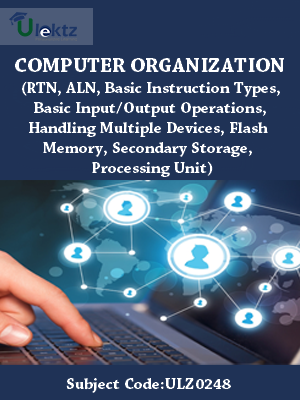

Note: Please check your Spam or Junk folder, in case you didn't receive the email with verification code.
1.1 Functional unit
1.2 Basic Operational concepts, Bus structures
1.3 System Software, Performance
1.4 The history of computer development
2.1 Instruction and Instruction Sequencing: Register Transfer Notation, Assembly Language Notation
2.2 Basic Instruction Types, Addressing Modes, Basic Input/output Operations
2.3 The role of Stacks and Queues in computer programming equation
2.4 Component of Instructions: Logic Instructions, Shift and Rotate Instructions
3.1 Arithmetic and Logic Instructions, Branch Instructions
3.2 Addressing Modes - Input/output Operations
4.1 Accessing I/O Devices
4.2 Interrupts: Interrupt Hardware, Enabling and Disabling Interrupts
4.3 Handling Multiple Devices, Direct Memory Access
4.4 Buses: Synchronous Bus, Asynchronous Bus
4.5 Interface Circuits
4.6 Standard I/O Interface: Peripheral Component Interconnect (PCI) Bus, Universal Serial Bus (USB)
5.1 Basic memory circuits, Memory System Consideration
5.2 Read-Only Memory: ROM, PROM, EPROM, EEPROM, Flash Memory
5.3 Cache Memories: Mapping Functions, INTERLEAVING
5.4 Secondary Storage: Magnetic Hard Disks, Optical Disks
6.1 Fundamental Concepts: Register Transfers, Performing An Arithmetic Or Logic Operation, Fetching A Word From Memory, Execution of Complete Instruction
6.2 Hardwired Control
6.3 Micro programmed Control: Microinstructions, Micro program Sequencing, Wide Branch Addressing, Microinstructions with next - Address Field
 No Preview is available for this book
No Preview is available for this book

 Get 100 instant uPoints on the purchase of Rs.100 or above for each order.
Get 100 instant uPoints on the purchase of Rs.100 or above for each order.
CategoriesComputer Science

Format EPUB

TypeeBook